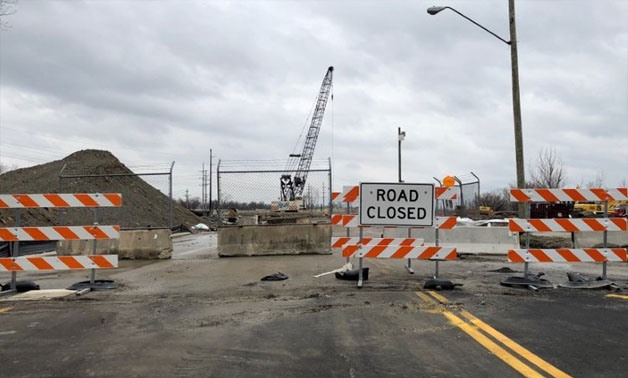
A road is under construction near a medical complex as part of an effort to bring jobs to ailing parts of Cleveland, Ohio, U.S., February 15, 2018. Picture taken February 15, 2018. To match Insight USA-ECONOMY/JOBS REUTERS/Howard Schneider
CLEVELAND - In Cleveland, a new road meant to cut commute times between the suburbs and a downtown medical hub has been redesigned as an “Opportunity Corridor” to bring businesses and jobs to poor neighborhoods along its way.
In St. Louis, development officials are repurposing a century-old hat factory into a space for small manufacturers to bring jobs back downtown, while Baltimore has committed $500 million to a private-led overhaul of an old industrial zone.
The efforts reflect a growing consensus among economists and policymakers that keeping the overall economy on track will not be enough to help areas left behind by a decade-long recovery.
The current expansion is among the longest ever and brought national unemployment to an 18-year low.
Yet over 6.3 million are still out of work, many of them clustered in cities with chronic, high unemployment. A Reuters review of federal data shows that out of those unemployed about a quarter live in 50 urban counties with above-average unemployment, and a third in just 100. (Graphic: tmsnrt.rs/2rzJc7R )
Often with large minority populations, those areas include cities like St. Louis, Cleveland and Baltimore - 20th century industrial powerhouses hit hard by globalization, demographic changes, and the shift to a service-based economy.
Amid the tightest labor markets in two decades and labor force growth the slowest in half a century, local and national officials are turning to targeted training schemes, new investment incentives, and other strategies to bring jobs closer to the unemployed.
“We definitely need to be thinking in terms of place as an important component...Increasing the number of people who are connected to the economy is fundamental to the maximum employment goal,” Atlanta Federal Reserve bank president Raphael Bostic told Reuters in an interview. “What counts as success? Is it two million people? Five million people?” Bostic said, referring to the number of jobless. “We can get to maximum employment and still have a lot of distress.”
PILE OF CASH
While monetary policy works on the national level, the Fed under former chair Janet Yellen and now under chairman Jerome Powell has been only gently raising interest rates in part to see if it can help lagging areas join the recovery.
However, a consensus is building among economists and politicians that the persistence of unemployment and poverty in certain areas needs to be addressed with direct, “place-based” policies.
The tax code approved by the Republican congress in December included a bipartisan-backed measure to support such locally-directed efforts, granting a capital gains waiver for those who invest in locations included on a list of distressed census tracts being chosen by state governors.
Advocates, who include Donald Trump’s Council of Economic Advisers Chair Kevin Hassett and Jared Bernstein, a former Obama administration adviser, hope it shifts capital from buoyant stock markets and high-value real estate to blighted rural pockets, struggling suburbs, or ailing inner city neighborhoods.
“Investors are sitting on a large pile of (unrealized) capital gains,” said John Lettieri, president of the Economic Innovation Group, a think tank that sponsored a 2015 paper by Hassett and Bernstein outlining the idea.
“We think the scale is likely to be measured certainly in the tens of billions of dollars,” Lettieri said about how much of an estimated $1 trillion in unrealized capital gains could make its way to neglected areas.
Such amounts still pale with the scale of the U.S. economy and critics worry the plan may only reshuffle where the poor and jobless live by speeding up gentrification in areas already on the upswing.
However, while the rules for the program are still under development and its effects uncertain, several local initiatives are gaining traction even without federal tax breaks. The Fed’s Bostic also noted that dollars invested in capital-starved areas may have greater impact and return than elsewhere.
That is a point often overlooked in national debate over issues such as tariffs, or by development authorities who traditionally focus on large, greenfield projects, say officials at the DeSales Community Development Corp in St. Louis.
The non-profit group is renovating a century-old, 87,000 square foot building in the Fox Park area that once housed a maker of high-end barber chairs, then a hat factory that supplied World War II troops. The plan is to bring jobs back to the area by filling the space with cabinetmakers, small bakers, or similar craft businesses.


Comments
Leave a Comment